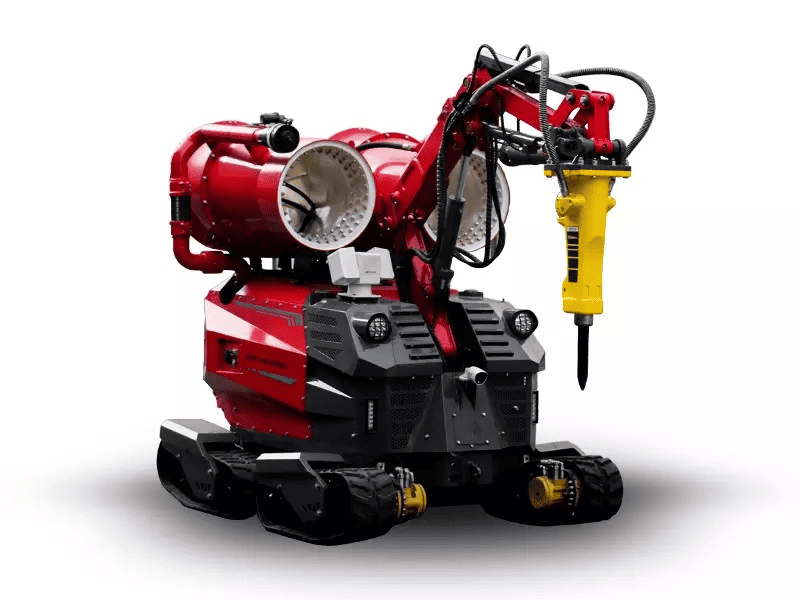Firefighting robots are the modern heroes of emergency response, designed to tackle fires in hazardous environments where human firefighters cannot safely operate. These robotic firefighters combine advanced robotics with firefighting capabilities, revolutionizing the way we approach dangerous and complex fire scenarios.
The integration of robotics in firefighting has been a game-changer. Robotic firefighting robots are remotely operated machines that can navigate through smoke, toxic fumes, and collapsing structures with ease. They are equipped with sensors and cameras that provide real-time data and visuals to the operators, allowing for precise and effective firefighting strategies. The use of robotic firefighters not only enhances the efficiency of firefighting operations but also significantly reduces the risk to human lives.
There are various types of firefighting robots, each designed for specific tasks and environments. For instance, the HCR series of firefighting demolition robots are diesel-driven machines that integrate both firefighting and demolition capabilities. These robots, such as the HCR120C, are compact and mobile, allowing them to pass through ordinary doorways and navigate narrow passages. Their large load-bearing capacity and strong obstacle-crossing ability enable them to climb stairs or 30-degree slopes, making them flexible and maneuverable in confined spaces.
The RXR-M150GD is a four-wheel-drive all-terrain firefighting robot designed for complex terrains and underground facilities. Its articulated suspension design provides excellent climbing and obstacle-crossing performance, allowing it to attack and cover dangerous fire targets that are inaccessible to personnel and conventional firefighting robots.

Firefighting robots work by remotely controlled operations, which include maneuvering, firefighting, and even demolition when necessary. Equipped with multi-sensor fusion, these robots can separate humans from the machine, ensuring safety and efficiency. For example, the HCR160C Firefighting Demolition Robot is driven by diesel power and operated via remote video remote control. It is equipped with a humanoid three-section arm working mechanism and a quick-change system, allowing it to be quickly equipped with hydraulic hammers, hydraulic shears, hydraulic saws, and grab buckets to complete demolition, shearing, grasping, and handling tasks within a large working radius.
Firefighting robots like the RXR-M200D-AHHC are equipped with an imported fire cannon with a large flow rate of 150L/s, which has a long firing range and can effectively meet the needs of fighting large-scale fires. These robots can remotely control the fire cannon to the required position using their own power, effectively substituting firefighters to approach the fire source and dangerous areas for reconnaissance, firefighting, and other operations.
The cost of firefighting robots varies depending on their capabilities, size, and the specific features they offer. Factors such as the type of hydraulic tools they can equip, their hose towing ability, and the flow rate of their fire water cannons influence their price. For instance, the HCR500C Firefighting Demolition Robot, with its 80 L/s large-flow fire water cannon, would have a different price point compared to a robot with lower specifications. The investment in firefighting robots is crucial for enhancing safety and efficiency in firefighting operations, and the cost is often justified by the reduction in casualties and property damage they can achieve.
Firefighting robots are a testament to the power of technology in enhancing safety and efficiency in high-risk environments. As we continue to push the boundaries of robotic firefighting, we can expect these machines to become even more advanced, with improved capabilities and broader applications. The future of firefighting is undoubtedly intertwined with robotics, and the collaboration between humans and these robotic firefighters will pave the way for safer and more effective disaster management.